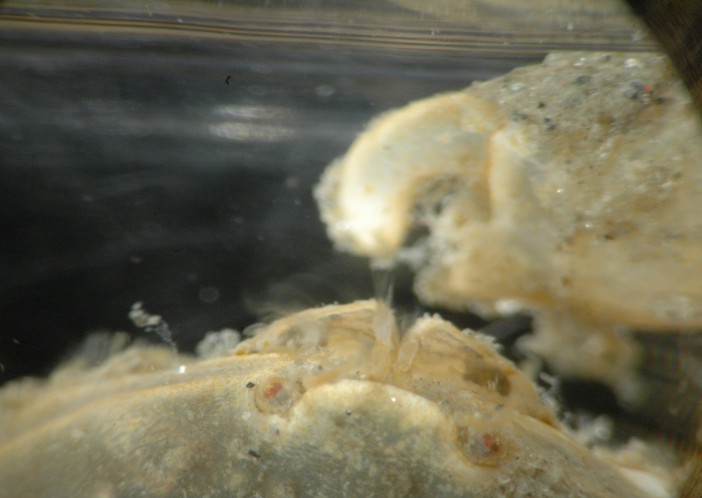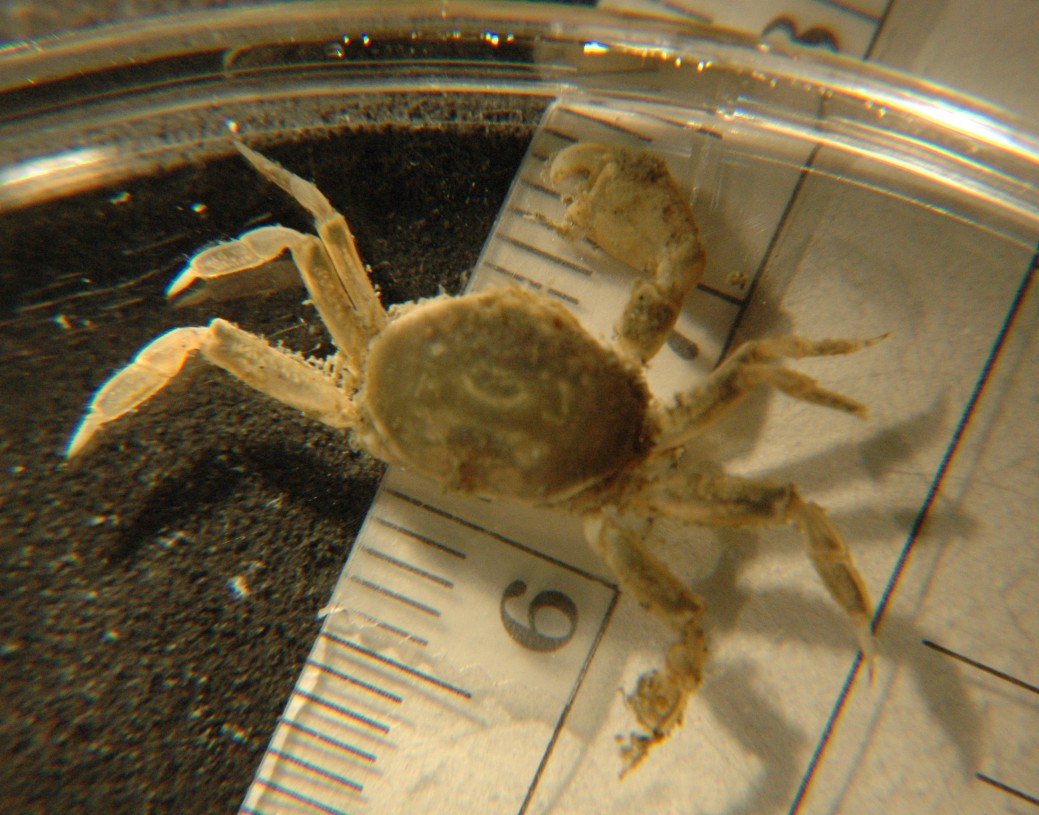How to Distinguish from Similar Species: Mature males and females ofFabia subquadrata have long hairs on legs 3 and 4, plus the dactyls of the walking legs are strongly curved. Most other pea crabs have a carapace at least 1.5x as wide as long.
Geographical Range: Porcher Island, British Columbia, Canada to Ensenada, Baja California, Mexico
Depth Range: Mid intertidal to 55 m
Habitat: Commensal in burrows of mudflat hosts such as Neotrypaea californiensis, style="font-style: italic;">Upogebia pugettensis, and the fat inkeeper worm Urechis caupo. Johnson and Snook say that the females of this species live in mussels and other bivalves.
Biology/Natural
History:
Feeds
on detritus. Also filter feeds with its maxillipeds.
More than one crab may be commensal in the same burrow. The
bryozoan
Triticella
elongata sometimes grows on the crab. In central
CA, mature females
are most abundant February to April but may be found from January to
August.
| Return to: | |||
| Main Page | Alphabetic Index | Systematic Index | Glossary |
References:
Dichotomous Keys:Carlton, 2007
Coffin, 1952
Flora and Fairbanks, 1966
Kozloff 1987, 1996
Wicksten, 2009
General References:
Hart,
1982
Jensen,
1995
Johnson
and Snook, 1955
Lamb
and Hanby, 2005
McConnaughey
and McConnaughey, 1985
Niesen,
1994
Niesen,
1997
Ricketts
et al., 1985
Scientific Articles:
Burnett, Nicole, 2024: A practical identification guide to the zoeae of the invasive European green crab, Carcinus maenas (Linnaeus, 1758) (Decapoda: Brachyura: Carcinidae), and to the zoeae of the families of brachyuran crabs in Washington state, USA. Journal of Crustacean Biology 44:4. doi.org/10.1093/jcbiol/ruae064
Web sites:
General Notes and
Observations: Locations,
abundances, unusual behaviors:

This closeup of the face and claw of the male shows the
red
cornea of
the eye and the thick propodus
and curved dactyl
of the cheliped.
Authors and Editors of Page:
Dave Cowles (2009): Created original page
CSS coding for page developed by Jonathan Cowles (2007)
